Laboratory of Arachnid Cytogenetics
Head:
doc. RNDr. Jiří Král, CSc.
Department of Genetics and Microbiology
Viničná 5, 1NP, room P6
Viničná 5, 1NP, room P3
Viničná 5, 1NP, room P5
Viničná 5, 1NP, room P7
Where to Find Us:
Viničná 5, Prague 2 - New Town, 128 43
the ground floor (rooms P3, P5, P5a, P6, P7)
Team MembersMethodology and Technical SupportScientific CollaborationsPublications |
TeachingProposed Topics of Theses for New StudentsStudent Theses in ProgressPast Student Theses |
Research Interests
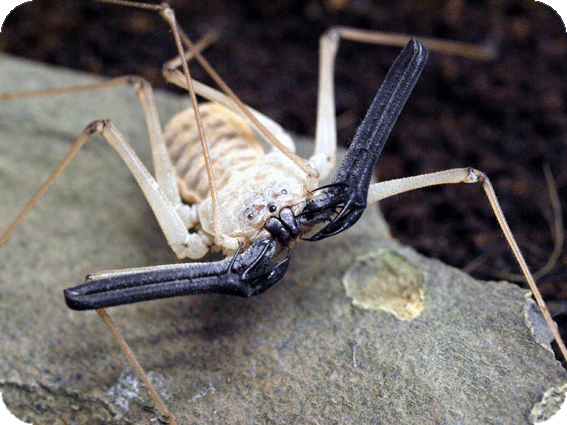 The Laboratory of Arachnid Cytogenetics is one of the few in the world that specializes in the study of chromosomes in arachnids, a highly diversified but poorly explored group of arthropodes. Of the more than 100,000 species of arachnids (a group that includes not only spiders but also scorpions, acari and other subgroups), only a small fraction has been cytogenetically studied. Yet even this small fraction has revealed many interesting findings. Due to significant karyotype diversity, arachnids include several groups that can serve as model organisms for understanding various aspects of chromosome biology. In our Laboratory, we primarily focus on the evolution of karyotypes and sex chromosomes. However, we also study other topics using suitable models, such as the evolution of holokinetic chromosomes and meiotic division, changes in genome organization associated with polyploidization, and the evolution of social behavior. We also contribute to cytogenetic research on other groups of invertebrates and parasitic protozoa.
The Laboratory of Arachnid Cytogenetics is one of the few in the world that specializes in the study of chromosomes in arachnids, a highly diversified but poorly explored group of arthropodes. Of the more than 100,000 species of arachnids (a group that includes not only spiders but also scorpions, acari and other subgroups), only a small fraction has been cytogenetically studied. Yet even this small fraction has revealed many interesting findings. Due to significant karyotype diversity, arachnids include several groups that can serve as model organisms for understanding various aspects of chromosome biology. In our Laboratory, we primarily focus on the evolution of karyotypes and sex chromosomes. However, we also study other topics using suitable models, such as the evolution of holokinetic chromosomes and meiotic division, changes in genome organization associated with polyploidization, and the evolution of social behavior. We also contribute to cytogenetic research on other groups of invertebrates and parasitic protozoa.
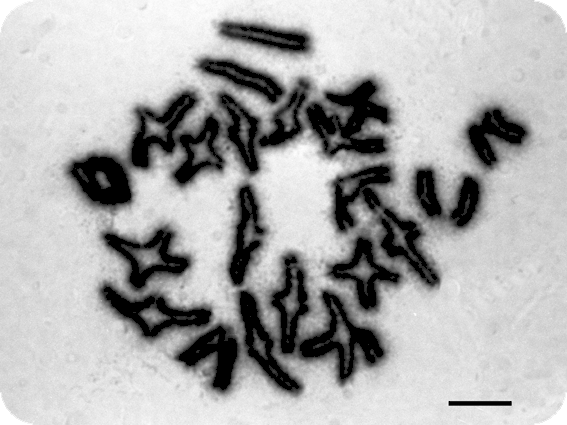 In spiders, an unusual X1X20 sex chromosome system (where 0 denotes the absence of a Y chromosome) is common. Males carry two non-homologous X chromosomes (X1 and X2), while females have two pairs of X chromosomes (X1X1X2X2). This system is otherwise rare among organisms but is widespread among spiders and regarded as an ancestral spider trait. Although it is likely the ancestral chromosomal sex determination system in spiders, its origin has not yet been explained. However, according to our data, sex chromosome systems of some spiders are among the most complex sex chromosome determinations found so far. Through various chromosomal rearrangements, the X1X20 system often evolves into very complex secondary sex chromosome systems with a higher number of X chromosomes (up to 13).
In spiders, an unusual X1X20 sex chromosome system (where 0 denotes the absence of a Y chromosome) is common. Males carry two non-homologous X chromosomes (X1 and X2), while females have two pairs of X chromosomes (X1X1X2X2). This system is otherwise rare among organisms but is widespread among spiders and regarded as an ancestral spider trait. Although it is likely the ancestral chromosomal sex determination system in spiders, its origin has not yet been explained. However, according to our data, sex chromosome systems of some spiders are among the most complex sex chromosome determinations found so far. Through various chromosomal rearrangements, the X1X20 system often evolves into very complex secondary sex chromosome systems with a higher number of X chromosomes (up to 13).
Our research aims to explain the origin of the X1X20 system and to clarify the mechanisms responsible for increasing the number of X chromosomes in spider karyotypes. According to our hypothesis, duplications of entire sex chromosomes, which are otherwise rare in other organisms and typically lead to severe sexual phenotype disorders and sterility, (e.g., in humans), played a significant role in the origin of the X1X20 system (and possibly systems with higher numbers of X chromosomes). We are also trying to detect specific cytological mechanisms that allowed the integration of sex chromosome copies into the genome and their structural differentiation. The evolution of new sex chromosomes in spiders also involved rearrangements between sex chromosomes and autosomes. All these facts suggest that spiders are an extremely attractive model for analyzing the origin and evolution of sex chromosomes. In terms of sex chromosome diversity, few other animal groups can rival them.
Some groups of arachnids (namely dysderoid spiders, buthid scorpions, and some clades of acari) also possess so-called holokinetic (holocentric) chromosomes. From an evolutionary perspective, these are a derived type of chromosome that lacks a centromere. Their kinetochore (the structure where spindle microtubules attach) covers most of the chromosome surface. Interesting deviations in karyotype evolution can be expected in organisms with these chromosomes. Due to their unusual structure, even some very unusual chromosomal rearrangements can become fixed. The karyotypes of organisms with holokinetic chromosomes are also often more plastic, with even closely related species potentially significantly differing in their karyotypes. We use this fact in analyzing speciation events in certain species complexes of spiders, where chromosomal rearrangements contributed to the formation of interspecies barriers.
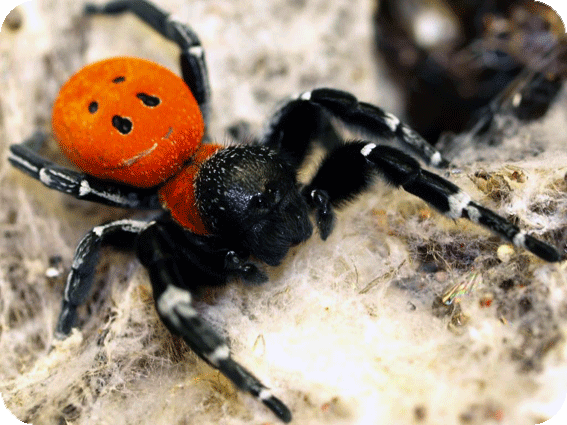 Although most spiders are solitary, a few species have developed social lifestyles comparable to the communities of social hymenopterans. In hymenopterans, specific genome modifications that increase genetic similarity among colony members and thus support the evolution of sociality are well-known. Different cytogenetic mechanisms played a role in the evolution of sociality in termites and the Australian Social Huntsman spider Delena cancerides. Our model system for studying this is the genus Stegodyphus, where we investigate how sociality affects genome structure.
Although most spiders are solitary, a few species have developed social lifestyles comparable to the communities of social hymenopterans. In hymenopterans, specific genome modifications that increase genetic similarity among colony members and thus support the evolution of sociality are well-known. Different cytogenetic mechanisms played a role in the evolution of sociality in termites and the Australian Social Huntsman spider Delena cancerides. Our model system for studying this is the genus Stegodyphus, where we investigate how sociality affects genome structure.
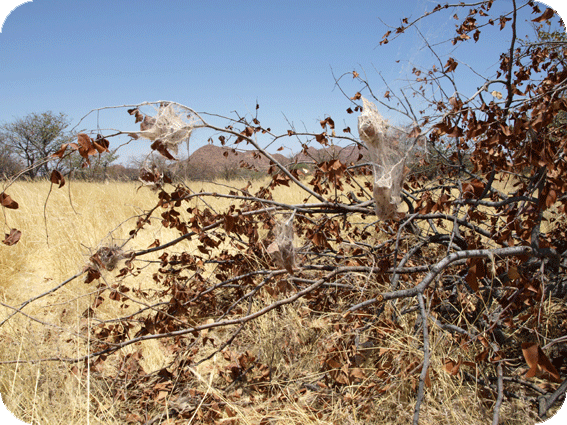 The Laboratory is well-equipped for classical and molecular cytogenetic methods including various variants of fluorescent in situ hybridization (FISH), whole chromosome probes and comparative genomic hybridizations (CGH). We collaborate with other cytogenetic groups in optimizing molecular cytogenetic procedures. Specialized laboratories at the Faculty of Science, Charles University, and partner laboratories allow us to use flow cytometry, transmission electron microscopy, and bioinformatics approaches in our research. Our results are often incorporated into current molecular phylogenetic frameworks. Our work also includes field collections during domestic and international expeditions (Central Asia, Israel, Mexico, Namibia, etc.). International expeditions are organized based on intensive collaboration with worldwide arachnological research groups. As part of this activity, we have also contributed to the US National Science Foundation project "Global Survey and Inventory of Solifugae".
The Laboratory is well-equipped for classical and molecular cytogenetic methods including various variants of fluorescent in situ hybridization (FISH), whole chromosome probes and comparative genomic hybridizations (CGH). We collaborate with other cytogenetic groups in optimizing molecular cytogenetic procedures. Specialized laboratories at the Faculty of Science, Charles University, and partner laboratories allow us to use flow cytometry, transmission electron microscopy, and bioinformatics approaches in our research. Our results are often incorporated into current molecular phylogenetic frameworks. Our work also includes field collections during domestic and international expeditions (Central Asia, Israel, Mexico, Namibia, etc.). International expeditions are organized based on intensive collaboration with worldwide arachnological research groups. As part of this activity, we have also contributed to the US National Science Foundation project "Global Survey and Inventory of Solifugae".

